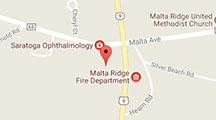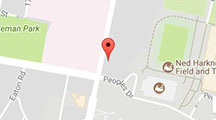Patient Information

What to Expect at Your First Visit
We are committed to making your visit with us a delightful experience!
What to Bring with You
- a valid photo ID;
- glasses or contact lenses if you wear them;
- eyedrops if you use them;
- a list of your prescription medications;
- a list of any health conditions or allergies;
- your insurance card (s) and copayment
- Your completed welcome packet
- notebook or journal should you feel the need to jot down parts of your discussion with your doctor
- If you so choose, a list of questions you may have for the doctor
Estimated Time of Your Visit
Depending on the amount of preliminary testing, specific to the patient’s needs, the appointment could take up to two hours.
If you have another commitment scheduled on the same day as your visit, please leave sufficient time to safely get to your next scheduled activity. Also consider that dilation (which can last up to six hours) can impair your driving ability. Bringing a driving companion is advisable.
Meanwhile, we have the following available to you and your companion to aid in your comfort:
- Free Wi-Fi
- Television
- A wide selection of magazine publications for your reading enjoyment
- Refreshing cold water, hot chocolate, and coffee drinks
What Will Happen During Your First Appointment
You will be greeted by one of our skilled technicians who will assist you with some paperwork prior to guiding you into the exam room. The exact type of exam will vary depending on your eye condition. But here are a few things to expect.
An ophthalmologist will begin by examining your eyes, either with a handheld ophthalmoscope like the one used by an optometrist or with a similar device that uses a handheld lens and a light attached to a headband. The second method, called indirect ophthalmoscopy, allows a better view of the inside of the eye. The light is much brighter than in an ordinary ophthalmoscope, so you may see more after-images.
Pupil enlargement
For detailed eye examinations, the ophthalmologist will likely use special drops to enlarge your pupils and allow for a better view. The drops may sting a little as they go in and cause a funny taste in your mouth because they mix with tear fluid that drains into your nose and then into your throat. But don’t worry – this is normal.
Telltale pictures
During your exam, the ophthalmologist may use a test called a fluorescein angiogram, which also involves dilating the pupils and is used to check for some types of retinal disease. A fluorescent dye is injected into a vein in your arm and travels rapidly to your eye, where it stains the blood vessels. The ophthalmologist will then take a series of photographs of your retina using a very bright light. These photographs will reveal the state of your retinal blood vessels and give vital clues about conditions such as diabetic retinopathy and macular degeneration.
Slit lamp ophthalmoscopy
The ophthalmologist may examine your eyes with an instrument called a slit lamp – a binocular microscope tilted on its side. This instrument is used to investigate disorders related to the outside of the eye, such as corneal abrasions, excessive eye watering, dry eyes, conjunctivitis and eyelid problems, or to look inside the eye for cataracts or other complications that need an enhanced view. During this examination you will sit in a chair with your chin and forehead resting on supports as you look through a slit. The ophthalmologist will illuminate your eye with a variable beam of light from the instrument, which will provide a three-dimensional image of your eye.
Be prepared
It is always best to take someone with you to your ophthalmologist appointment. You will be told in advance if eye drops are going to be used to dilate your pupils because your vision will be blurred for a few hours afterward and so you must not drive. Also remember to bring sunglasses. Even if it’s rainy and overcast, sunglasses will help you avoid becoming dazed after your appointment, which is a possibility since dilated pupils let in more light than normal.
While it may involve unfamiliar equipment and procedures, an ophthalmologist exam is nothing to be afraid of. Once you have undergone a detailed examination, you and your ophthalmologist will be able to begin planning the best course of action to protect your sight and preserve the health of your eyes.
New Patient Forms



